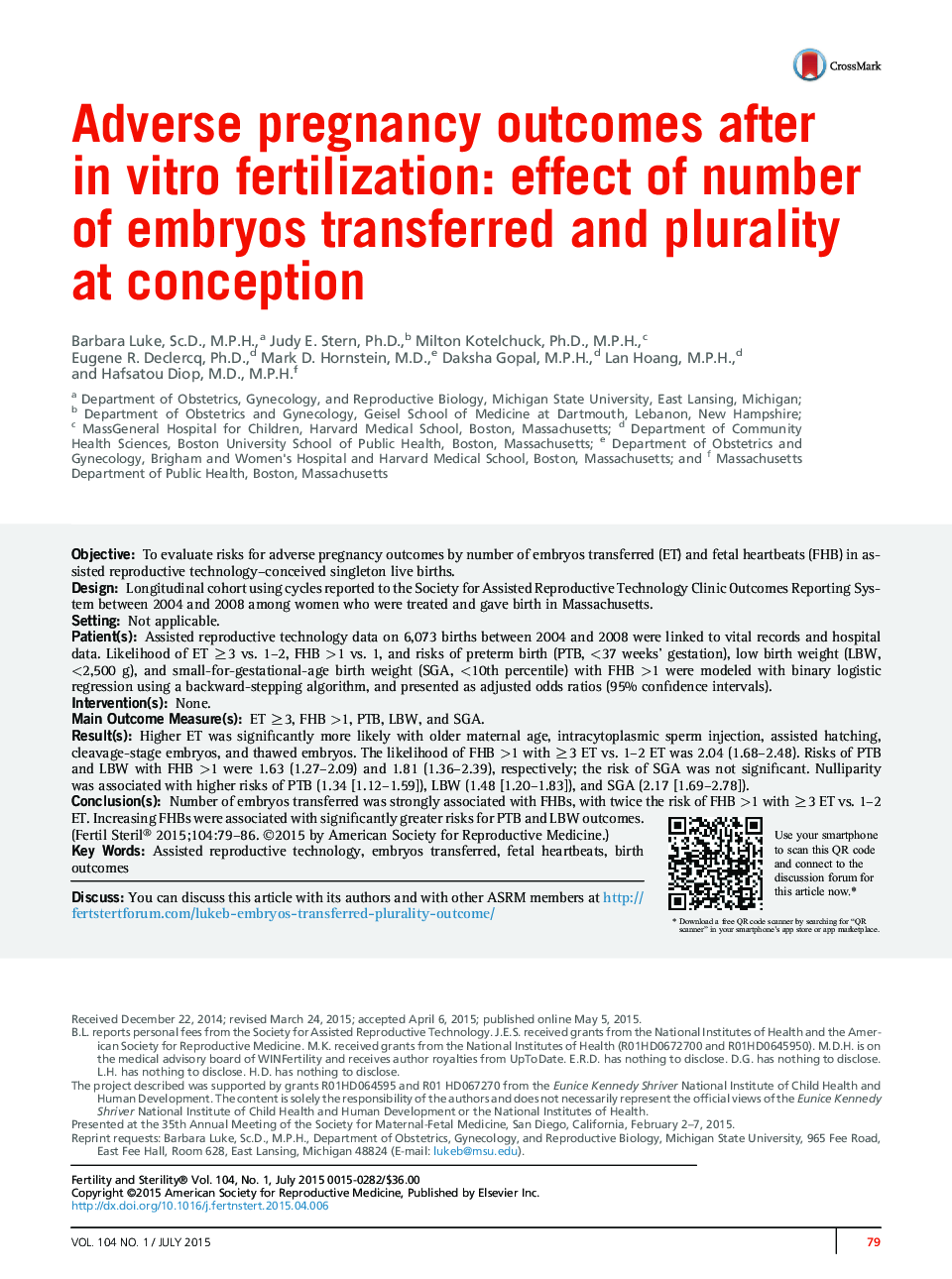| Article ID | Journal | Published Year | Pages | File Type |
|---|---|---|---|---|
| 3934075 | Fertility and Sterility | 2015 | 8 Pages |
ObjectiveTo evaluate risks for adverse pregnancy outcomes by number of embryos transferred (ET) and fetal heartbeats (FHB) in assisted reproductive technology–conceived singleton live births.DesignLongitudinal cohort using cycles reported to the Society for Assisted Reproductive Technology Clinic Outcomes Reporting System between 2004 and 2008 among women who were treated and gave birth in Massachusetts.SettingNot applicable.Patient(s)Assisted reproductive technology data on 6,073 births between 2004 and 2008 were linked to vital records and hospital data. Likelihood of ET ≥3 vs. 1–2, FHB >1 vs. 1, and risks of preterm birth (PTB, <37 weeks' gestation), low birth weight (LBW, <2,500 g), and small-for-gestational-age birth weight (SGA, <10th percentile) with FHB >1 were modeled with binary logistic regression using a backward-stepping algorithm, and presented as adjusted odds ratios (95% confidence intervals).Intervention(s)None.Main Outcome Measure(s)ET ≥3, FHB >1, PTB, LBW, and SGA.Result(s)Higher ET was significantly more likely with older maternal age, intracytoplasmic sperm injection, assisted hatching, cleavage-stage embryos, and thawed embryos. The likelihood of FHB >1 with ≥3 ET vs. 1–2 ET was 2.04 (1.68–2.48). Risks of PTB and LBW with FHB >1 were 1.63 (1.27–2.09) and 1.81 (1.36–2.39), respectively; the risk of SGA was not significant. Nulliparity was associated with higher risks of PTB (1.34 [1.12–1.59]), LBW (1.48 [1.20–1.83]), and SGA (2.17 [1.69–2.78]).Conclusion(s)Number of embryos transferred was strongly associated with FHBs, with twice the risk of FHB >1 with ≥3 ET vs. 1–2 ET. Increasing FHBs were associated with significantly greater risks for PTB and LBW outcomes.
